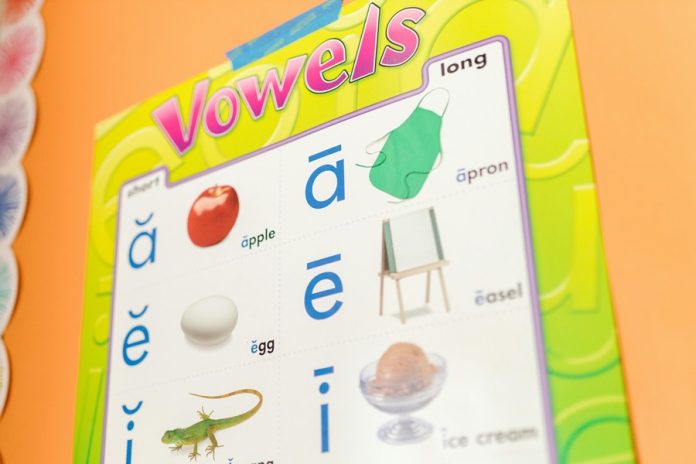Should we be using phonics in the classroom? Research editor, Gill Ragsdale weighs up the evidence…
Round 1: a closer look at the evidence
A thorough 2020 review of both research meta-analyses and English schools’ results found no support for the use of systematic phonics being clearly superior in teaching reading, according to Professor of Neuroscience at Bristol University, Jeffrey Bowers.
Despite becoming a legal requirement across English state schools in 2007, the debate generally referred to as ‘the Reading Wars’ still rages over whether the use of systematic phonics (SP) in primary schools is really the most efficient way to teach young children to read, as opposed to other alternatives such as the ‘whole language’ approach focussing on the meaning of words, supported by ad hoc use of phonics as deemed necessary.
Bowers’ review sought to evaluate previous research and results afresh to determine whether claims that SP was the best method of instruction were truly valid. Two approaches were taken do this. Firstly, checking the analyses and conclusions from the existing 12 meta-analyses (each one in itself an analysis and review of forgoing research) and secondly, looking at schools’ Phonics Screen Check (PSC) scores and their relation to outcomes such as schools’ Standardised Assessment Tests (SATs) scores.
A major recurring criticism of the previous meta-analyses was that many studies did not actually test whether SP led to better outcomes, as they did not make the necessary comparisons, such as to an appropriate alternative method and/or control. Furthermore, Bowers identified several cases where the statistical analyses may have been poorly interpreted; for example, by implying that the effect size of the SP method could be distinguished as significantly larger than another method when in fact this could not be concluded. Consequently, according to Bowers, these meta-analyses were not able to conclude overall that SP was definitely more efficient as a method of reading instruction.
Further evidence used in support of SP is the rise in England’s schools’ PSC scores and their ranking in an international league table using the Program for International Student Assessment (PISA) scores.
To meet the required standard, PSCs require children in year one to initially respond accurately to 80% of a 32-item list, and it is clear that scores have improved: 58% of year one pupils met the standard in 2012, rising to 82% in 2018. But did this translate into better reading outcomes? Looking at SAT scores over this timeframe showed no general relationship between learning to use phonics and actual literacy.
Looking at longer-term influences, English schools’ PISA ranking did improve from fifteenth in 2006 to eighth in 2016. Bowers points out that the ranking had previously been higher – third in 2001 – and that Northern Ireland’s schools consistently outrank England’s despite no mention of SP in their curriculum, which tends towards mixed methods. Furthermore, when taking out the data from private schools, the ranking in 2016 drops from eighth to eleventh place.
Overall, Bowers concluded that the issue is not whether SP is effective so much as whether it is more effective than other methods, and consequently whether more time and funding could be used to look at these other options and make a fuller assessment. Most troubling of all, given that a major criticism of SP is that it takes the joy out of learning to read, is that in an international ranking of children’s enjoyment of reading, England’s schools ranked thirty-fourth, the lowest of all English-speaking countries.
Round 2: a rebuttal against doubt
In 2023, Professor of Education at Sheffield University, Greg Brooks, disputed Bowers’ assertion that there was no evidence of systematic phonics being better than other methods for teaching literacy in primary schools. Brooks is a long-standing advocate for SP and member of several advisory groups on education and literacy. Brooks took particular issue with Bowers’ re-interpretation of four of the meta-analyses in his article, claiming that overall, ‘the evidence in favour of systematic phonics instruction seems robust’.
However, when the debate depends on such nuanced interpretation of statistical analyses, it could call into question just how ‘robust’ the evidence really is.
Round 3: a counter-response in defence of alternatives
Professor Bowers’ 2023 reply countered Brooks’ criticism of his 2020 paper that cast doubt on the supremacy of systematic phonics (SP) in teaching literacy. Bowers countered Brooks criticism of his statistical reinterpretation of previous meta-analyses and also offered some further recent evidence in support of his argument undermining confidence in SP.
Another score which has been taken to support the impact of SP is the International Reading Literacy Study (PIRLS) which tests reading comprehension: England moved up from eighth position in 2016 to fourth in 2021, leading one education commentator to write:
‘The UK Government made the Year One Phonics Screening Check mandatory in English schools in 2012. There is good evidence suggesting that the Phonics Screening Check played a significant role in England’s improved performance in the most recent PIRLS assessment.’
However, Bowers points out that the biggest increase in PIRLS scores occurred between 2006 and 2011, before the use of the PSC; in fact, the 2021 score is only slightly improved on 2001. Furthermore, England is consistently outranked by countries that are not required to use SP and do not have a PSC, such as Singapore, Ireland and Northern Ireland.
The debate between Professors Bowers and Brooks can be seen repeated by many other researchers, teachers and other experts across the literature and seems set to continue. It may be relevant here to note the different academic backgrounds of the protagonists in the cited articles. As a neuroscientist, Bowers’ research investigates how word knowledge is learned and coded in the brain while Brooks was an experienced teacher who moved into education research, principally focussing on the use of phonics. Experienced researchers in any field tend to have favoured angles, but perhaps the view from neuroscience has less invested, hence Bowers remarking: ‘The “reading wars” that pitted systematic phonics against whole language is best characterized as a draw.’
Phonics: seeing is believing
When teaching pre-schoolers phonics, being able to see visual cues such as the speaker’s gestures and mouth movements improves learning grapheme-phoneme correspondence, according to a study by Novelli, Ardoin and Rodgers from the Universities of Georgia and Iowa, USA.
Five four-year-old US pre-school students took part in the study, having two 10-minute sessions per day, five days per week for 36 days. Phonemes were initially modelled by the instructor. Students were then asked ‘what sound?’ when presented with cards showing various graphemes and accuracy was recorded by an observer without immediate feedback.
Assessments were carried out under three conditions, one where the student could see the instructor’s mouth and gestures, one where the instructor’s mouth was hidden behind a mask and they could not see the instructor’s gestures, and also a control condition to gauge overall improvements.
Analysis of the results showed that while students generally made good progress in acquiring grapheme-phoneme associations in both conditions, their acquisition improved nearly twice as much when they were able to see the instructor’s mouth and gestures; something to consider given the increasing use of computer-assisted learning, use of two-dimensional cartoon models and the use of masks during the COVID pandemic.
REFERENCES
Bowers, J. S. (2020) Reconsidering the evidence that systematic phonics is more effective than alternative methods of reading instruction, Educational Psychology Review 32: 681-705
Bowers, J. S. (2023) There is still little or no evidence that systematic phonics is more effective than common alternative methods of reading instruction: Response to Brooks (2023), Review of Education, DOI: 10.1002/rev3.3432
Brooks, G (2023) Disputing recent attempts to reject the evidence in favour of systematic phonics instruction, Review of Education DOI: 10.1002/rev3.3408
Novelli, C., Ardoin, S. P. & Rodgers, D. B. (2023) Seeing the mouth: the importance of articulatory gestures during phonics training, Reading and Writing, doi.org/10.1007/s11145-023-10487-3





